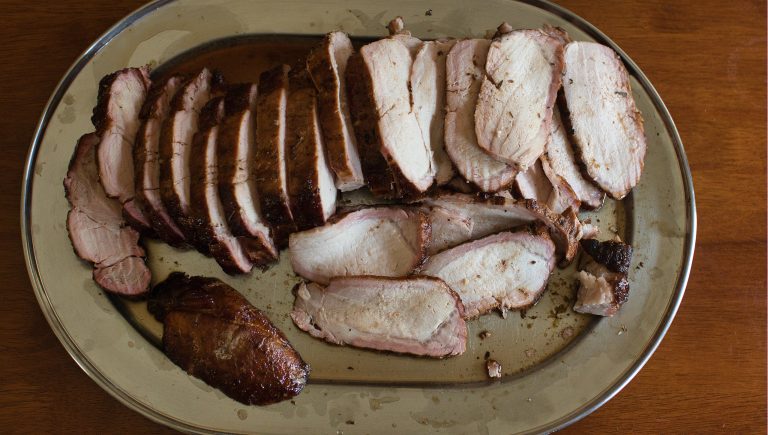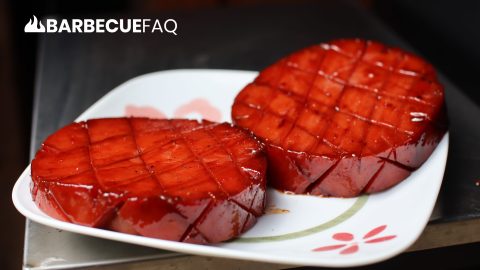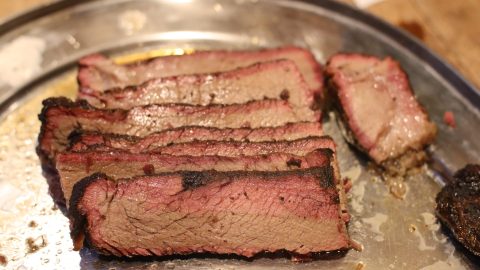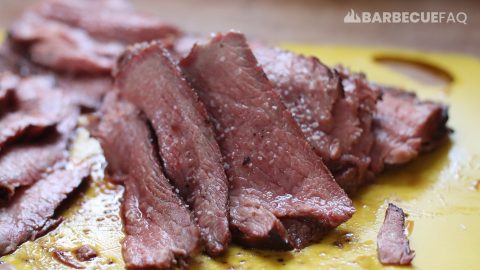If You Can, Get a Pork Loin from the Blade End
This half has more fat and is more tender.
In the package, look for an end that’s a darker hue of purple and is “relaxed.”
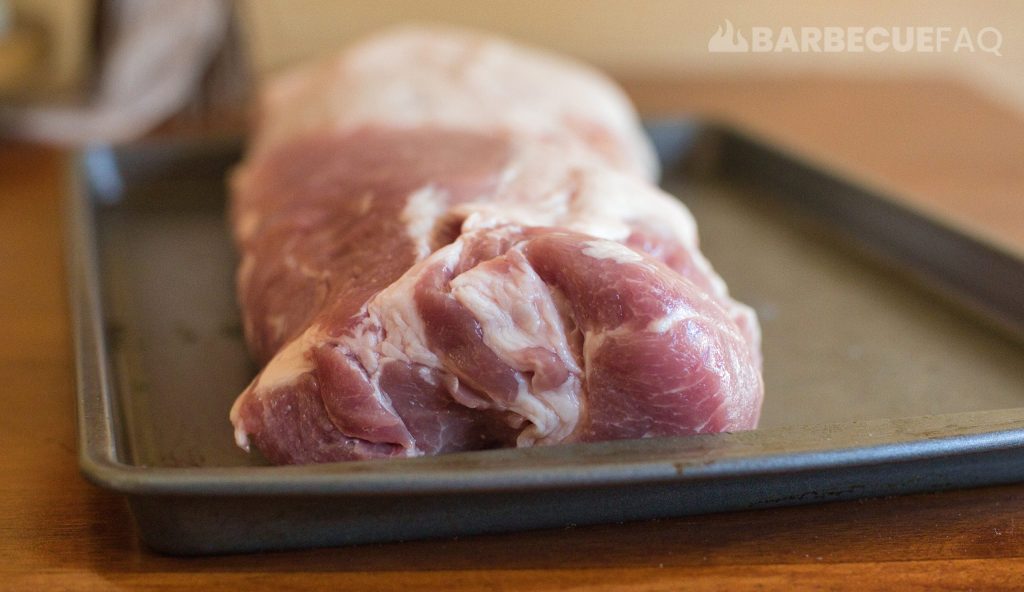
Dry Rub Ingredients
Use your favorite BBQ rub or here’s a basic one:
- 1 tbsp paprika (smoked or sweet)
- 2 tbsp turbinado sugar
- 1 tbsp Diamond crystal kosher salt
- 1/2 tbsp freshly cracked pepper
- 1 tbsp thyme
- 1 tsp granulated garlic
- 1 tbsp dry mustard
- 1 tsp Cumin
Apply this to all sides of the pork loin.
Get Your Smoker to 225-250F
Add a chunk of your favorite hardwood – I used cherry.
Add another chunk after 1 hour of smoking.
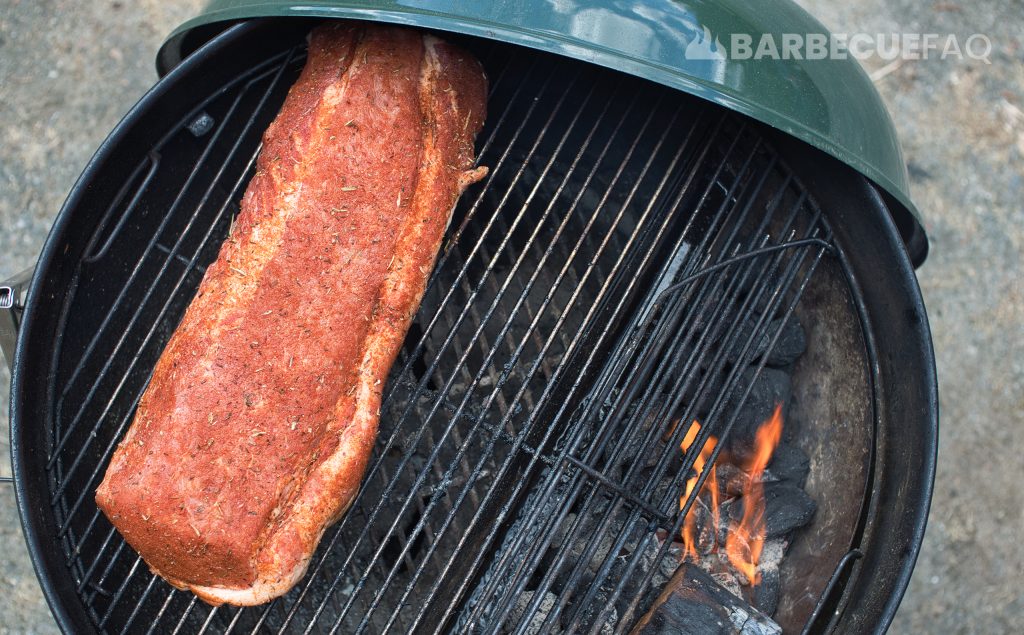
Monitor Internal Temperature So You Don’t Overcook the Meat
Once you hit 140-145F*, take the meat off the smoker to rest while you get your smoker/grill to 350F.
*Going any higher will only cause the meat to dry out.
Once the Grill is at ~350F, Sear The Pork Loin
Do so for 30-60 seconds on each side.
After developing a slight crust, take off to rest and make a quick simple syrup.
Simple Syrup Ingredients
In a pot over medium heat combine:
- 1 Cup Water
- 1 Cup White Sugar
- Optional: 1 tbsp of your favorite fruit preserves
Heat this mixture until the sugar dissolves and the preserves are well combined.
DO NOT let this mixture boil.
Once combined, allow to cool and then transfer to a glass jar or bottle.
While the pork loin is resting, apply some of this simple syrup to the surface.

Slicing the Pork Loin
Pictured below is the grain direction of pork loin (in green) – you then would slice against the grain (in white).
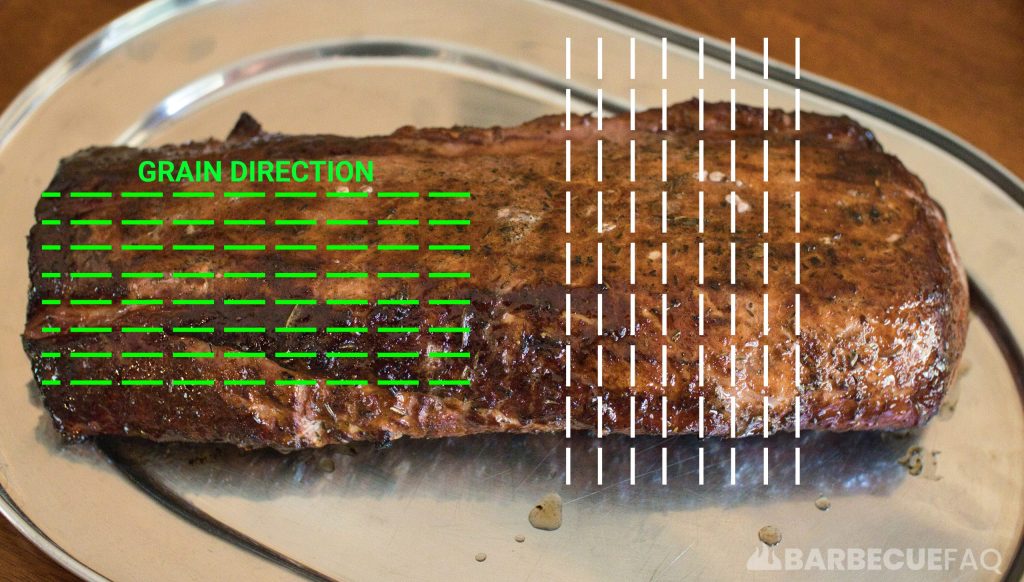
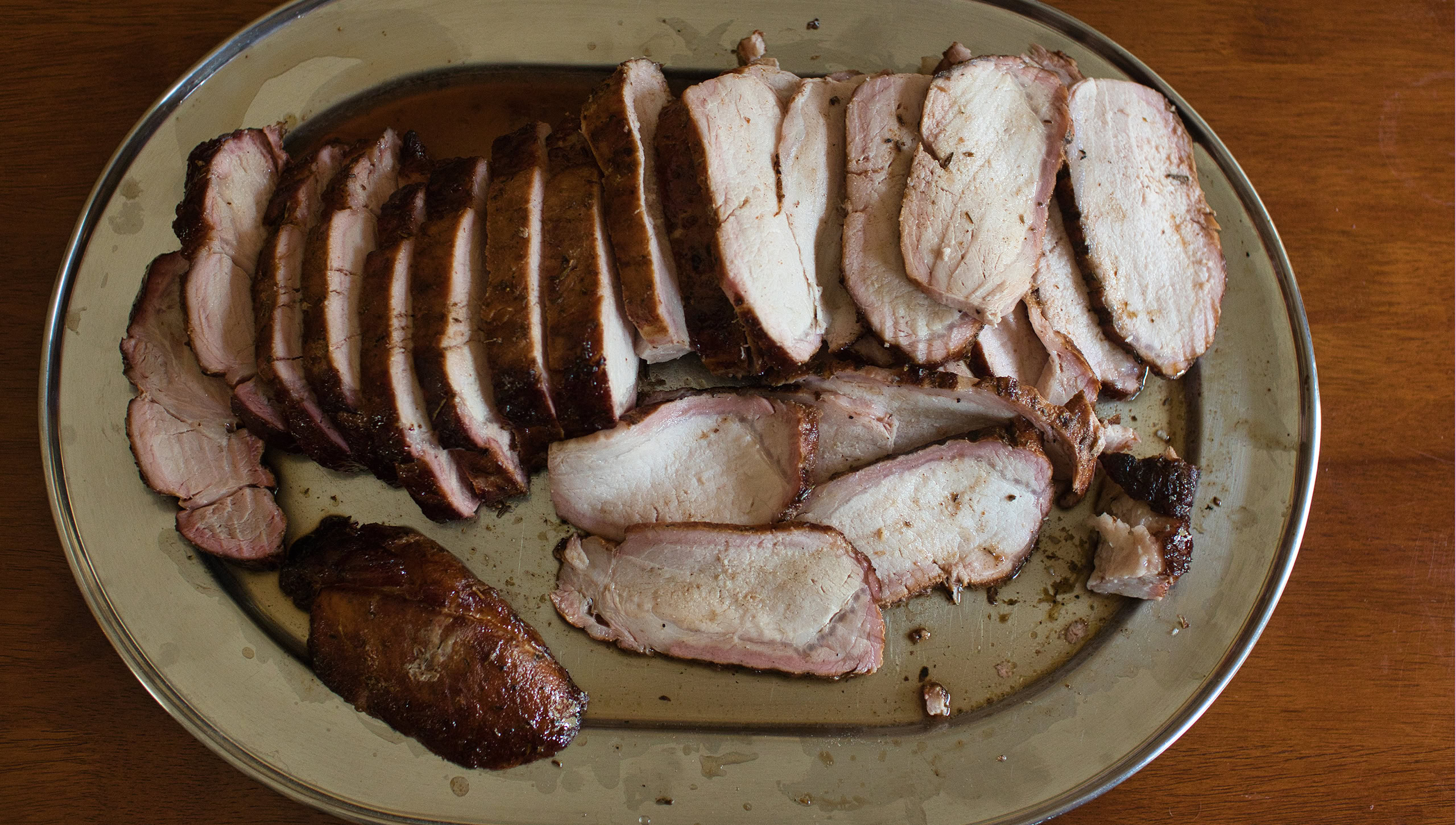
Smoked Pork Loin Recipe
Ingredients
- 4.92 lbs Pork Loin
Dry Rub
- 1 tbsp paprika smoked or sweet
- 2 tbsp turbinado sugar
- 1 tbsp Diamond crystal kosher salt
- 1/2 tbsp freshly cracked pepper
- 1 tbsp thyme
- 1 tsp granulated garlic
- 1 tbsp dry mustard
- 1 tsp Cumin
Simple Syrup
- 1 cup Water
- 1 cup White Sugar
- 1 tbsp Fruit Preserves
Instructions
- Remove the pork loin from vacuum packaging.4.92 lbs Pork Loin
- Place the pork loin on a cutting board and pat dry with a paper towel, then apply your dry rub. The goal is to cover all surfaces of the meat (including edges).1 tbsp paprika, 2 tbsp turbinado sugar, 1 tbsp Diamond crystal kosher salt, 1/2 tbsp freshly cracked pepper, 1 tbsp thyme, 1 tsp granulated garlic, 1 tbsp dry mustard, 1 tsp Cumin
- Put dry-rubbed pork loin on a plate and in the fridge while you prepare your smoker.
Smoking the Pork Loin
- Get your smoker to 225 – 250F.
- Once the smoker has stabilized, place a cherry wood chunk on the coals.
- Bring the pork loin outside and place in the cool zone of the smoker – opposite of your fire.
Searing the Pork Loin
- Monitor the internal temperature of the pork loin. Once the thickest part of the loin reaches 140-145F, take off to rest while you get your grill to 350F.
- Once at 350F, sear for 30-60 seconds on both sides. Then take off to rest.
Glaze with a Simple Syrup
- This is optional. In a pot over medium heat combine sugar and water and some fruit preserves. Combine until the sugar is dissolved and the preserves are well combined. DO NOT let this mixture boil. Once combined allow to cool and transfer to a glass jar or bottle.1 cup Water, 1 tbsp Fruit Preserves, 1 cup White Sugar
- Then glaze the pork loin with a little bit of the simple syrup while it's resting.
Slicing the Pork Loin
- The grain runs length wise – slice vertically, against the grain.


